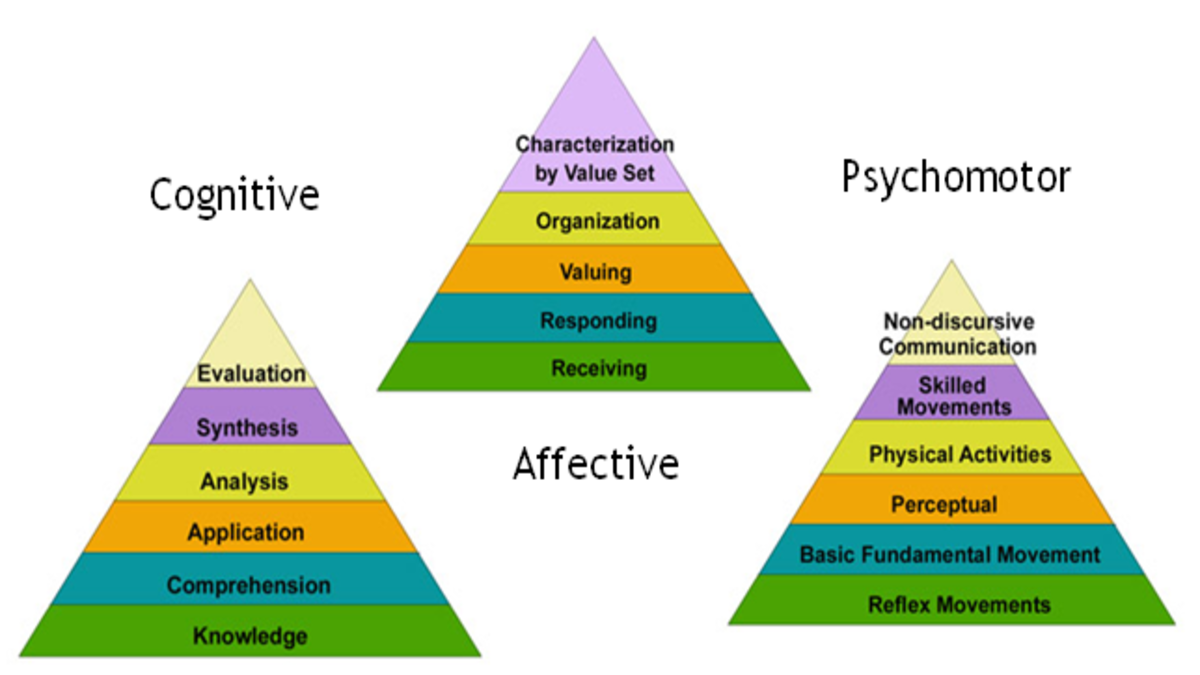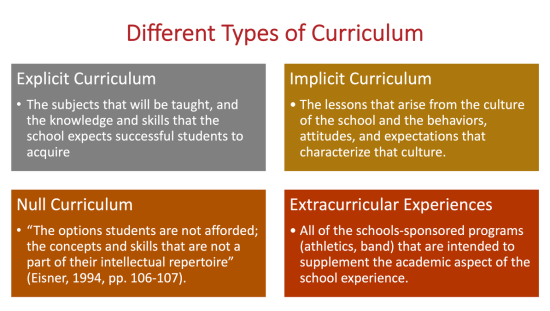The Taxonomy of Educational Objectives, known as Bloom’s Taxonomy (Bloom, Engelhart, Furst, & Krathwohl, 1956) is one of the most recognized learning theories in the field of education. Educators often use Bloom’s Taxonomy to create learning outcomes that target not only subject matter but also the depth of learning they want students to achieve, and to then create assessments that accurately report on students’ progress towards these outcomes (Anderson & Krathwohl, 2001).
What is Bloom’s Taxonomy?
Bloom’s taxonomy is a classification system used to define and distinguish different levels of human cognition—i.e., thinking, learning, and understanding. Educators have typically used Bloom’s taxonomy to inform or guide the development of assessments (tests and other evaluations of student learning), curriculum (units, lessons, projects, and other learning activities), and instructional methods such as questioning strategies.
The Three Domains of Learning
Bloom’s taxonomy was originally published in 1956 by a team of cognitive psychologists at the University of Chicago. It is named after the committee’s chairman, Benjamin Bloom (1913–1999). The committee identified three domains of learning or educational activities. (Bloom, et al. 1956)
- Cognitive domain: Learning related to knowledge or intellectual skills (i.e., from simple recognition and memory to complex problem solving and evaluation) (Knowledge) Bloom’s Taxonomy
- Affective domain: Learning related to attitudes, feelings, & emotions (Attitude or self) Krathwohl’s Taxonomy
- Psychomotor domain: Learning related to actions and motor skills (i.e., from simple actions to complex manual or physical practical skills) (Skills) Harrow’s Taxonomy
1. Cognitive Domain of Learning Bloom’s Taxonomy
The cognitive domain aims to develop the mental skills and the acquisition of knowledge of the individual. The cognitive domain encompasses of six categories which include knowledge; comprehension; application; analysis; synthesis; and evaluation. Knowledge includes the ability of the learner to recall data or information. This is followed with comprehension which assesses the ability of the learner to understand the meaning of what is known. This is the case where a student is able to explain an existing theory in his or her own words (Anderson et al, 2011). This is followed by application which shows the ability of the student to use the abstract knowledge in a new situation. A typical case is when an Economics student is able to apply the theory of demand and supply to the changing market trend of clothing during a particular season. The analysis category aims to differentiate facts and opinions. The synthesis category shows the ability to integrate different elements or concepts in order to form a sound pattern or structure to help establish a new meaning. The category of evaluation shows the ability to come up with judgments about the importance of concepts. A typical scenario is when a manager is able to identify and implement the most cost effective methods of production in the bid to increase profits whilst sustaining a high level of competitive advantage.
2. Affective Domain of Learning Krathwohl’s Taxonomy
The affective domain includes the feelings, emotions and attitudes of the individual. The categories of affective domain include receiving phenomena; responding to phenomena; valuing; organization; and characterization (Anderson et al, 2011). The sub domain of receiving phenomena creates the awareness of feelings and emotions as well as the ability to utilize selected attention. This can include listening attentively to lessons in class. The next sub domain of responding to phenomena involves active participation of the learner in class or during group discussion (Cannon and Feinstein, 2005). Valuing involves the ability to see the worth of something and express it. This includes the ability of a learner to share their views and ideas about various issues raised in class. The ability of the student to prioritize a value over another and create a unique value system is known as organization. This can be assessed with the need to value one’s academic work as against their social relationships. The sub domain of characterization explains the ability to internalize values and let them control the behavior of the individual. In view of this, a student considers the academic work highly important as it plays an important role in deciding the career path chosen rather than what may be available.
3. Psychomotor Domain of Learning Simpson’s Taxonomy
The psychomotor domain includes utilizing motor skills and the ability to coordinate them. The sub domains of psychomotor include perception; set; guided response; mechanism; complex overt response; adaptation; and origination. Perception involves the ability to apply sensory information to motor activity. For instance, a student practices a series of exercises in a text book with the aim of scoring higher marks during exams. Set, as a sub domain, involves the readiness to act upon a series of challenges to overcome them. In relation to guided responses, it includes the ability to imitate a displayed behavior or utilize a trial and error method to resolve a situation (Sousa, 2016). The sub domain of mechanism includes the ability to convert learned responses into habitual actions with proficiency and confidence. Students are able to solve exams questions after they have confidently been able to answer some past questions. Complex Overt responses explain the ability to skillfully perform complex patterns of actions. A typical instance has to do with the ability of a student to have an increased typing speed when using a computer. Adaptability is an integral part of the domain which exhibits the ability to modify learned skills to meet special events. An instance is when a student who has learnt various underlying theories is able to invent or make a working model using everyday materials. Origination also involves creating new movement patterns for a specific situation (Sincero, 2011).
Assessment within Learning Domains
Which of these three taxonomies of learning domains to use for a given measurable student outcome depends upon the original goal to which the measurable student outcome is connected. There are knowledge-based goals, skills-based goals, and affective goals (affective: values, attitudes, and interests); accordingly, there is a taxonomy for each. Within each taxonomy of learning domain, levels of expertise are listed in order of increasing complexity. Measurable student outcomes that require the higher levels of expertise will require more sophisticated classroom assessment techniques.
It’s important to note that the different levels of thinking defined within each domain of the Taxonomy are hierarchical. In other words, each level subsumes the levels that come before it. So, if we look at the cognitive domain for example, we can infer that before a student can conduct an analysis, they first might need to know the methods of analysis, understand the different elements to review, and consider which method to apply. It is only then that they will be ready to conduct the analysis itself.
Criticism on Bloom’s Taxonomy
While the committee produced an elaborate compilation for the cognitive and affective domains, they omitted the psychomotor domain. Their explanation for this oversight was that they have little experience in teaching manual skills within the college level. However, there have been at least three important psychomotor models created by other researchers.
Their compilation divides the three domains into subdivisions, starting from the simplest cognitive process or behavior to the most complex. The divisions outlined are not absolutes and there are other systems or hierarchies that have been devised, such as the Structure of Observed Learning Outcome (SOLO) Taxonomy. However, Bloom’s taxonomy is easily understood and is probably the most widely applied one in use today.
OTHER RELATED POSTS
Cognitive Domain — Bloom’s Taxonomy
Affective Domain — Krathwohl’s Taxonomy




Insightful